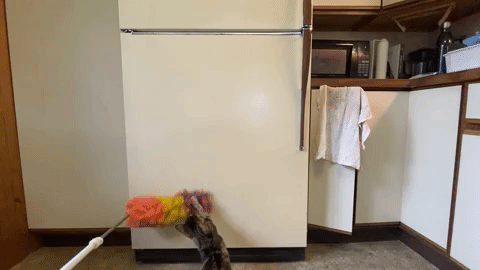Spring Cleaning: The Kitchen Edition
Spring cleaning! Not just for your clothing closets, but also for your pantry and fridge (and linen closet and coat closet too, but we’ll get to that later). What’s the point of spring cleaning a kitchen, you might ask? Re-organizing your kitchen allows you to take stock of all the food items you enjoyed cooking with in the winter, and to assess other food items that were less of a hit. Clearing your space can also stimulate your creativity and inspire you to take on new cooking projects. And as the sun shines brighter and sets later, it sheds a literal light on all the kitchen dust and grime we’ve all neglected in the winter.
To reach that same level of outdoor freshness indoors, prepare to don a pair of rubber gloves, grab a few trash bags, and get to work breathing new life into the kitchen. Here are some hot organizing tips on the pantry and the fridge, two of the most important zones in the kitchen:
The Pantry
Spritz your shelves. Chances are, your pantry shelves have accumulated some dust and grime in the past year––nothing that a good wipe down with All-Purpose cleaning spray can’t fix. Remove the contents of your pantry and consider lining each shelf with contact paper to make future clean-ups a breeze.
Pare down your pantry. Once you’ve pulled everything out, toss expired food items and donate anything you don’t plan on using to your local food pantry. Since the pantry is prime real estate, make sure to keep only what you need and use on a regular basis. If you have kitchenware and/or appliances wedged in here that you seldom use, consider relocating them to other shelves, offering them to a friend, or donating to your local thrift store (same goes for all those extra grocery totes!).
Create zones. It might sound obvious, but this is the number one way to maintain order and streamline your kitchen pantry. Designate separate shelves for your baking ingredients, snacks, dried pastas, and canned goods. You can simply label each shelf, or opt for these clear bins, which are ideal for pantry organization. Pro tip: Make sure your most frequently used products are stored at eye level (e.g. pasta, snacks), and lesser used items (e.g. baking ingredients) are stored at higher or lower shelves.
Spice up your spice shelf. While spices never officially go bad, they do lose their potency overtime. When your spices are a jumbled mess in the pantry, many get left out of the regular rotation and end up going unused. To avoid this, consider opting for a spice shelf so everything is in plain sight. This 3-tier one by Copco is inexpensive and gets the job done. I would also recommend transferring any spices from plastic baggies to glass jars, which drastically extends their shelf life.
Ditch the expired oils. Olive oil should be consumed within six months of opening. If you’re not sure when you first opened the bottle, your nose is a great litmus test. If it smells musty or rancid instead of bright and grassy, give it a toss! For future organization purposes, if you often forget about what’s lurking in the deep recesses of your pantry shelves, consider placing all your oils on a lazy susan.
The Fridge
Clear it out and clean it up. Just like the pantry, chances are your fridge could probably use a good wipe down. Pull all the contents of your fridge onto your countertop, then clean everything with warm water and dish soap and wipe it dry. Now’s the time to replace that old box of Baking Soda with a new one for odor absorption. Make future clean-ups easier with fridge bin and drawer liners (paper towels work well in a pinch, too).
Toss the sauce. Be sure to toss any expired condiments, hot sauces, dairy products and jams and jellies. If all your food items are up to date but you often find your fridge door shelves bursting at the seams, consider moving excess condiments over to clear, fridge-friendly lazy susans.
Get in the zone. Like the pantry, the key to keeping your fridge in check is to designate zones for all food categories. Give each category like dairy products, drinks, snacks, and leftovers their own home. Most fruits and veggies should go in the crisper, dairy should be placed in the back of the lower shelves where it’s coolest, healthy snacks should be placed in front to encourage healthy snacking, and leftovers should be placed at the front of your shelves so you remember to eat them! Don’t underestimate the power of the clear glass food storage container for leftovers and snack storage. For other food storage, these clear bins are also excellent for keeping everything in its place.
Put a label on it. Labels are an easy yet efficient way to keep your food categories in their proper place. If you like your labels typed, the Brother P-Touch Label Maker is a winner. For a more personalized look, I recommend using Scotch Chalkboard tape. And in a pinch, you can of course use masking tape and a sharpie.

